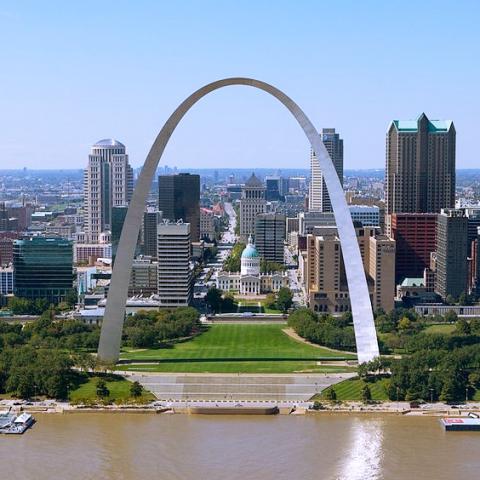Go on TOP of the GATEWAY ARCH, St. Louis
 No other attraction in St. Louis is more recognizable than the Gateway Arch. To St. Louisans it is the symbol of our city and a source of great pride. Here's what to know when you visit this one-of-a-kind landmark.
No other attraction in St. Louis is more recognizable than the Gateway Arch. To St. Louisans it is the symbol of our city and a source of great pride. Here's what to know when you visit this one-of-a-kind landmark.How It All Began:
In 1935, the federal government selected the St. Louis riverfront as the site for a new national monument honoring the pioneers who explored the American West. After a nationwide competition in 1947, architect Eero Saarinen’s design for a giant stainless steel arch was chosen as the winning design. Construction on the Arch began in 1963 and was completed in 1965. Since it opened, the Arch has been one of St. Louis’ most popular attractions with millions of people visiting every year.
Facts About the Arch:
The Gateway Arch is 630 feet tall, making it the tallest national monument in the country. It is also 630 feet wide at its base and weighs more than 43,000 tons. The Arch may be heavy, but it moves. It was designed to sway with the wind. It moves up to an inch in a 20 mile per hour wind and can sway up to 18 inches if the winds hit 150 miles per hour. There are 1,076 stairs going up each leg of the Arch, but the tram system carries most visitors to the top.
The Ride to the Top:
There's nothing quite like the ride to the top of the Arch. Some visitors can't stomach four minutes in one of its tiny trams, but for those who can, the trip is certainly worthwhile. During the ride up, you'll see the inner workings of the monument and get a sense of how it was built. Once at the top, there are 16 windows on each side that offer incredible views of St. Louis, the Mississippi River and the Metro East. If you’ve already been to the top during the day, it’s worth making the trip again at night to see the city lights.
Other Things to Do:
The Gateway Arch is just one part of the Jefferson National Expansion Memorial. The Museum of Westward Expansion is located under the Arch. This free museum features exhibits on Lewis & Clark and 19th century pioneers who moved America’s borders westward. Just across the street from the Arch is the third part of the Memorial, the Old Courthouse. This historic building was the site of the famous Dred Scott slavery trial. Today, you can tour restored courtrooms and galleries. If you visit during the holiday season, you’ll see some of the finest Christmas decorations in town.
Source: stlouis.about.com